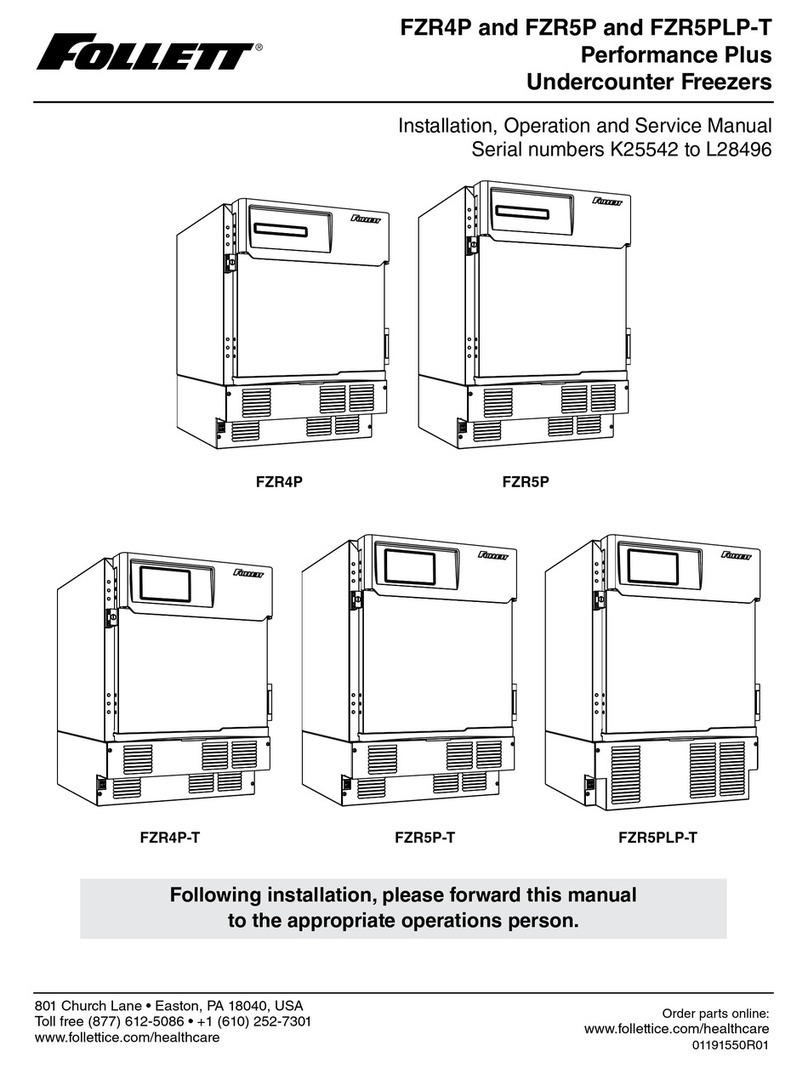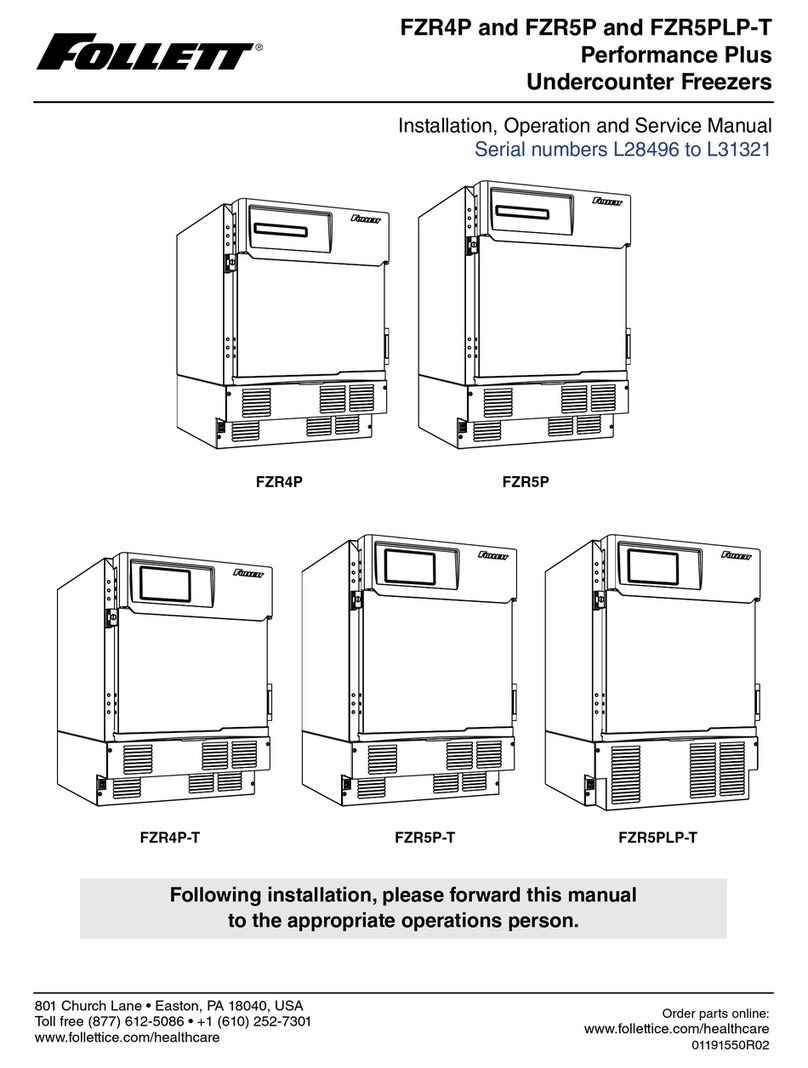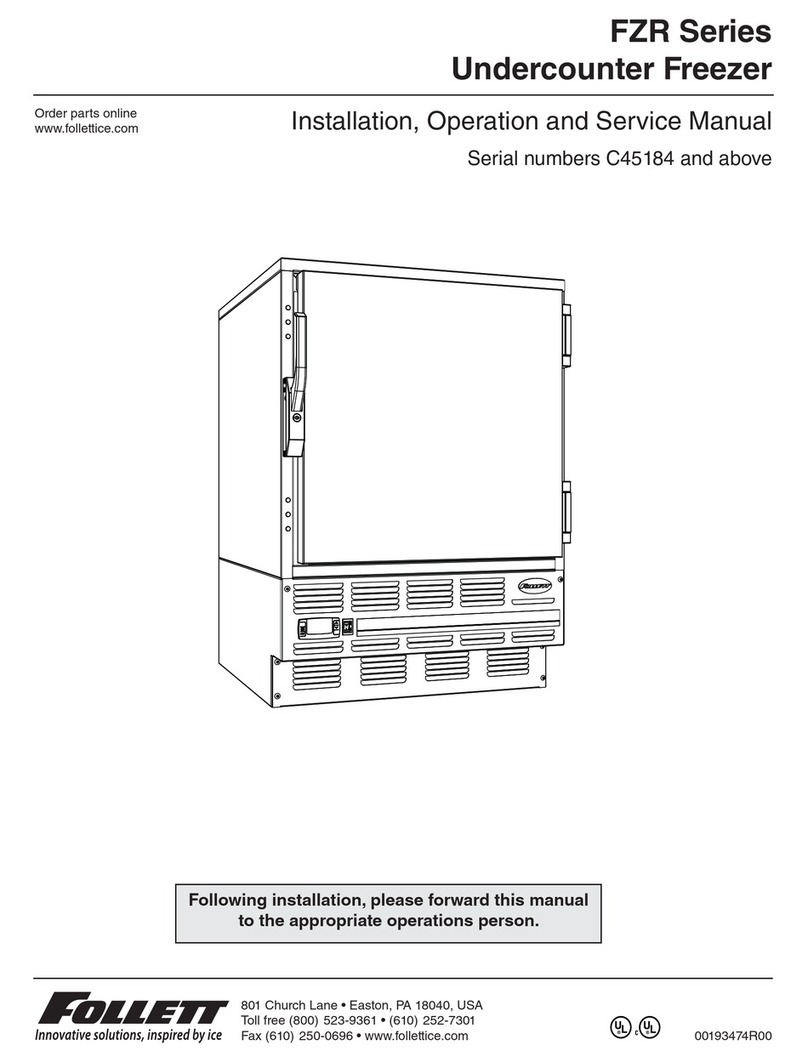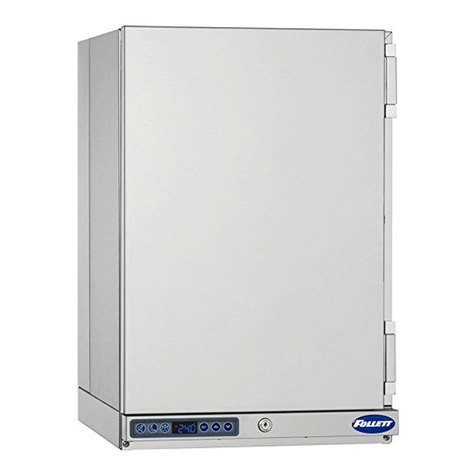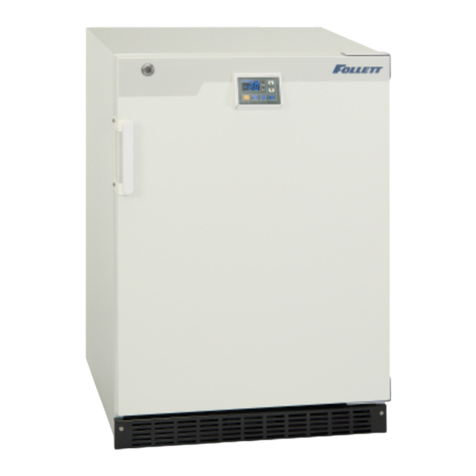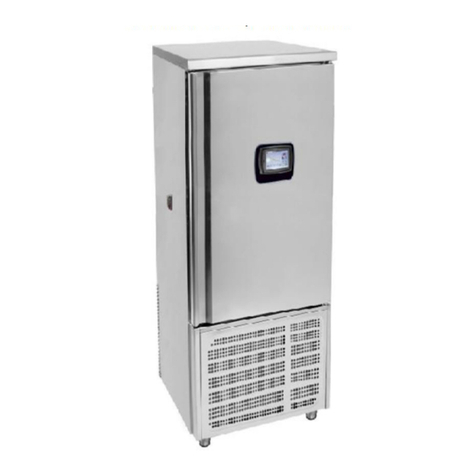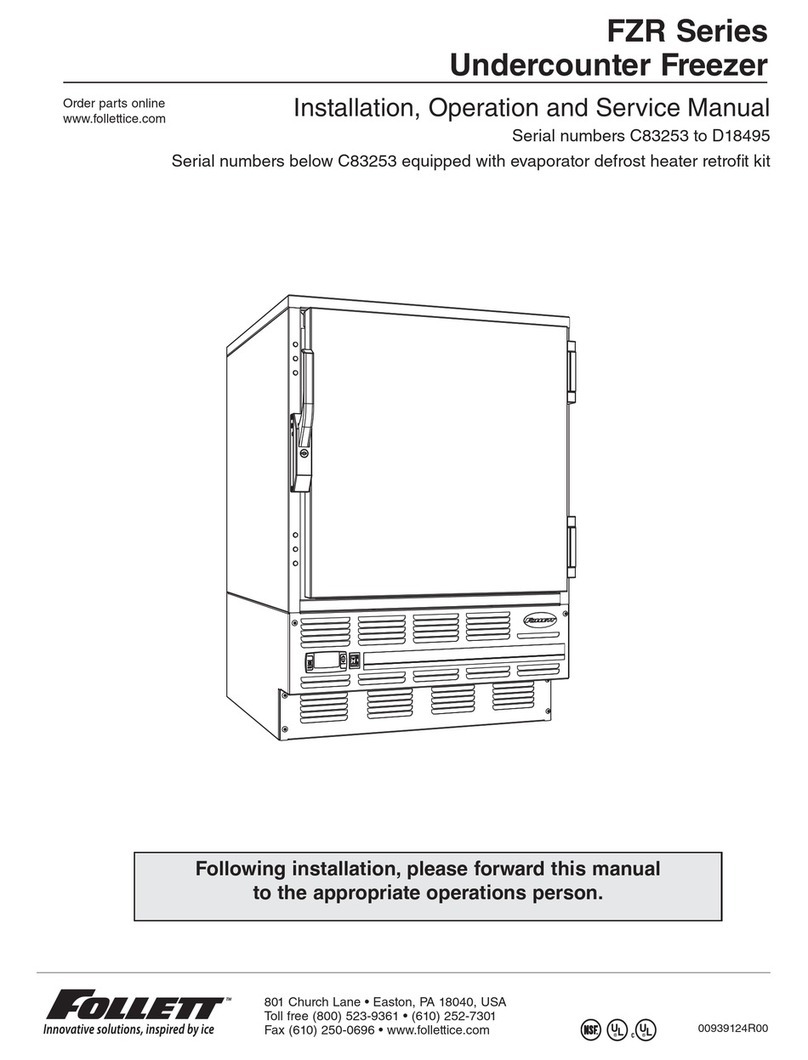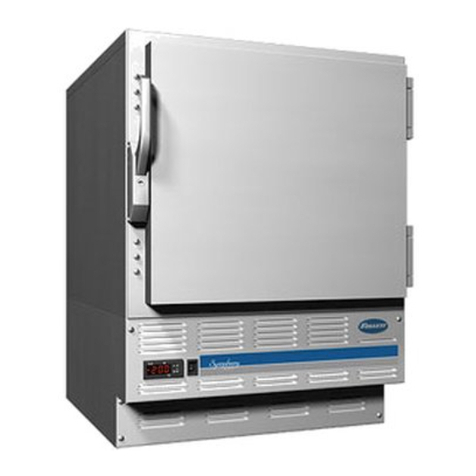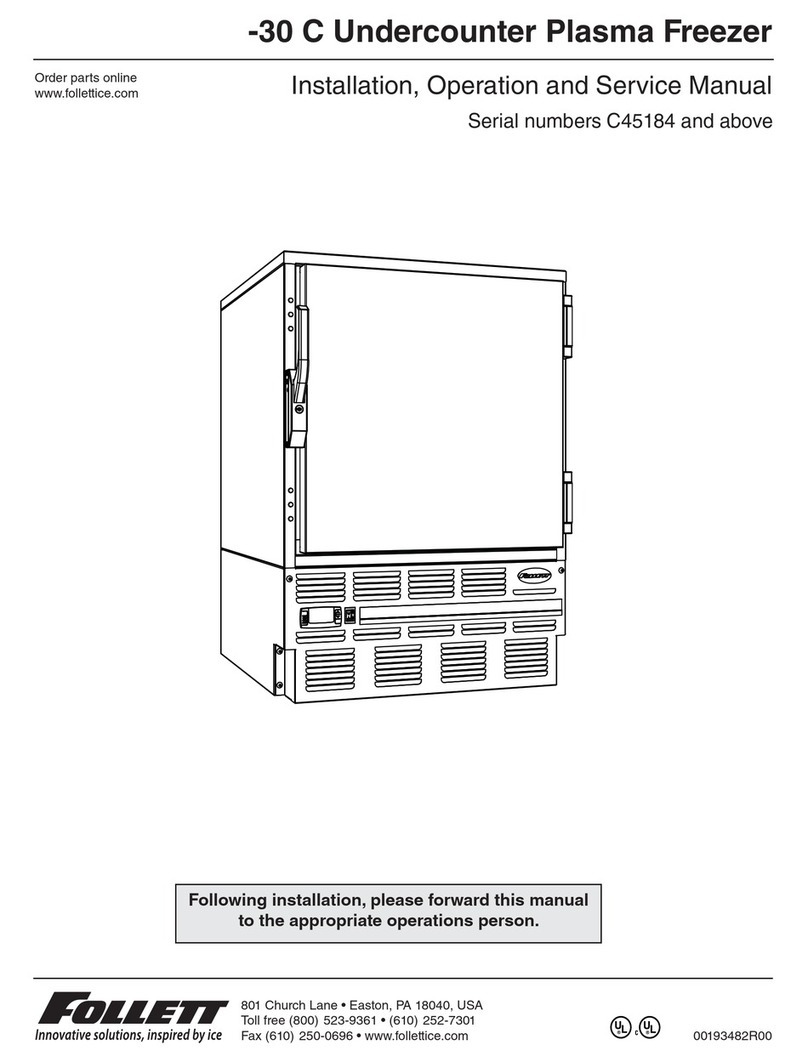
Operation
The temperature controller and probe indicate when the refrigeration system is required to turn on and off.
The refrigeration system removes heat from the cabinet interior and rejects it to the surrounding room air. When the
cabinet interior temperature reaches +2 C (+4 F) above the controller set point, the probe signals the controller to
turn the refrigeration system on. The normally-open controller contacts 4 and 5 close and energize the evaporator
and condenser fan motors, compressor and door heater. The snowake and fan LED's on the controller will come
on to indicate the refrigeration system is on. The compressor uses a current-style starting relay and a starting
capacitor to start the compressor motor.
When the cabinet interior temperature falls to the set point, the probe signals the controller to turn the refrigeration
system off. The controller contact 5 reopens, which de-energizes the condenser fan motor and the compressor. The
snowake LED will go out and the fan LED will remain on.
Any accumulated frost on the evaporator coils melts during the defrost cycle. The condensate drains to a drain pan
mounted along the condensing unit. The heat from the condensing unit evaporates any condensate in the drain
pan.
Temperature control
The temperature control system is preset by the factory to maintain a cabinet temperature of -23 C (-10 F). If
desired, the cut-out temperature can be raised as high as -15 C (5 F) by following the instructions on page 6
for changing the temperature set point. The 2 C cut-out differential will be maintained regardless of the controller
set point.
Defrosting
The FZR series undercounter freezers control frost accumulation on the evaporator through automatic timed defrost
cycles. The defrost cycle is initiated by the temperature controller every 6 hours. Contacts 4 and 5 on the controller
open and the refrigeration system is turned off. Contact 2 is closed and the defrost heater is energized. The melting
snowake LED on the controller will come on, and the temperature display will read: “dEF” to indicate the freezer is
in the defrost cycle.
The heaters warm the evaporator coil and drain pan to melt the frost and drain the water to the condensate pan.
The temperature controller monitors evaporator temperature using a probe embedded in the coil. The controller
terminates the defrost cycle when the evaporator temperature reaches +5 C (+41 F) or after 12 minutes of defrost
time, whichever occurs rst. As the defrost cycle terminates, the controller de-energizes the heater and restarts
the compressor and condenser fan. The snowake LED on the controller will come on to indicate the refrigeration
system is running.
There is a 5 minute delay before the evaporator fan motor is re-energized. The fan LED on the controller will
come on to indicate the fan is running and the temperature display resumes displaying cabinet temperature. A
defrost cycle can be initiated manually at any time by depressing and holding the melting snowake button for
approximately three seconds. As a safety feature, a temperature safety switch mounted on the evaporator will turn
off the defrost heater if the temperature of the evaporator reaches +27 C (+80 F) regardless of controller operation.
The FZR series freezers have been designed specically for the storage of temperature–critical medications. Other
storage applications may require modications of the factory-programmed defrost cycle settings. Please consult
Follett technical service if defrost modication is needed.
Note: Storage of products with very low volumes may require additional product insulation.
Note: Serial numbers below C57095 were programmed with defrost cycles every 2-4 hours terminating at
+5 C (+41 F) or after 15 minutes, whichever came rst. If you are experiencing problems with frost on any of
these earlier units, please call Follett's technical service department at (800) 523-9361 or (610) 252-7301 for
a programming key to update your unit to the most current program settings.
Cleaning
Interior – Using a sponge or soft cloth, clean unit with a non-abrasive, non-chlorinated, all-purpose detergent.
Exterior – Wipe exterior with a soft cloth in the direction of grain as needed. Stainless steel polish may be used to
enhance the nish of the unit.
Use only non-chlorine-based cleaners. Cleaners containing chlorine can cause staining and pitting of the
stainless steel.
!

